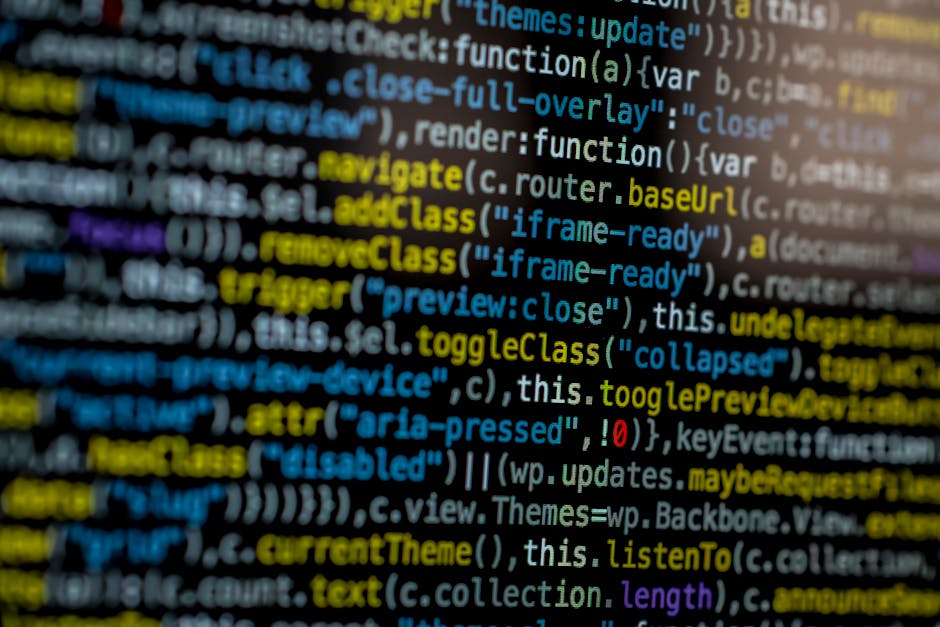 html
html
Scraping Amazon for Prices and Data? Here's How
Why Scrape E-commerce Sites Like Amazon?
In the fast-paced world of e-commerce, staying competitive means having access to the right information, and having it fast. We're talking about understanding your competitors' pricing strategies, tracking product availability, identifying emerging trends, and generally making data-driven decision making. Manually collecting this data would take forever, and it's prone to errors. That's where web scraping comes in.
E-commerce scraping, or web data extraction, involves using automated tools (web crawler) to extract information from websites. Think of it as a digital assistant that tirelessly gathers data for you. The insights you gain can be transformative for your business. For example, scraped data can feed sales forecasting models.
Here are some key benefits:
- Price Tracking: Monitor competitor prices in real-time and adjust your own prices dynamically.
- Product Detail Extraction: Gather comprehensive product information (descriptions, specs, reviews) for competitive analysis or populating your own product catalogs.
- Availability Monitoring: Track stock levels to optimize your inventory management and avoid stockouts.
- Deal Alerting: Identify special offers and promotions to inform your own marketing strategies.
- Catalog Clean-up: Automatically identify outdated or incorrect product listings.
- Competitive Intelligence: Understand competitor assortment, promotions, and customer sentiment.
Scraping isn't just for big corporations, either. Small businesses and even individuals can leverage web scraping to gain a competitive edge. For example, you could scrape data without coding using certain tools.
Is Web Scraping Legal and Ethical?
This is a crucial question. While web scraping itself isn't inherently illegal, it's essential to do it responsibly and ethically. Here's a quick guide:
- Check the Robots.txt File: This file (usually located at
www.example.com/robots.txt) tells web crawlers which parts of the site they're allowed to access. Respect its directives. - Review the Terms of Service (ToS): The website's ToS often outlines acceptable usage policies. Make sure your scraping activities comply.
- Avoid Overloading the Server: Don't make requests too frequently, as this can overwhelm the server and potentially lead to your IP address being blocked. Implement delays and use rate limiting.
- Respect Copyright and Intellectual Property: Don't scrape copyrighted material without permission.
- Be Transparent: Identify your web crawler with a user-agent string that clearly indicates its purpose.
Ignoring these guidelines can lead to legal trouble or being blocked from the website. Remember that being a good internet citizen is paramount. There are also options for managed data extraction, where a third party handles the scraping process for you, ensuring compliance.
A Simple Example: Scraping Amazon with Python and Requests
Let's walk through a basic example of scraping a product price from Amazon using Python and the requests library. This is a simplified demonstration, and real-world scraping often requires more sophisticated techniques like using a headless browser or handling JavaScript-rendered content.
Step 1: Install the Requests Library
Open your terminal or command prompt and run:
pip install requestsStep 2: Inspect the Amazon Page
Go to the Amazon product page you want to scrape. Right-click on the price and select "Inspect" (or "Inspect Element") in your browser. This will open the developer tools. Examine the HTML to identify the tag and class containing the price.
Important Note: Amazon's HTML structure changes frequently, so the exact tag and class will vary. You'll need to adapt the code below to match the current structure of the page you are scraping.
For this example, let's assume the price is inside a tag with the class "a-offscreen".
Step 3: Write the Python Code
Here's the Python code that uses the requests library to fetch the HTML content of the page:
import requests
from bs4 import BeautifulSoup
def scrape_amazon_price(url):
"""
Scrapes the price of a product from an Amazon product page.
Args:
url: The URL of the Amazon product page.
Returns:
The price of the product as a string, or None if the price could not be found.
"""
try:
headers = {
'User-Agent': 'Mozilla/5.0 (Windows NT 10.0; Win64; x64) AppleWebKit/537.36 (KHTML, like Gecko) Chrome/91.0.4472.124 Safari/537.36'
}
response = requests.get(url, headers=headers)
response.raise_for_status() # Raise an exception for bad status codes
soup = BeautifulSoup(response.content, 'html.parser')
# Adapt this line to match the actual HTML structure of the page
price_element = soup.find('span', class_='a-offscreen')
if price_element:
return price_element.text.strip()
else:
return None
except requests.exceptions.RequestException as e:
print(f"Error during request: {e}")
return None
except Exception as e:
print(f"An error occurred: {e}")
return None
# Replace with the actual URL of the Amazon product page
product_url = 'https://www.amazon.com/Example-Product-ASIN/dp/B0EXAMPLE' # Replace with a real ASIN
price = scrape_amazon_price(product_url)
if price:
print(f"The price is: {price}")
else:
print("Price not found.")
Explanation:
- Import Libraries: We import the
requestslibrary for making HTTP requests andBeautifulSoupfor parsing HTML. - Set User-Agent: The User-Agent header is crucial. Amazon (and many other sites) will block requests from scripts that don't have a proper User-Agent. We're pretending to be a web browser.
- Make the Request: We use
requests.get()to fetch the HTML content of the page. - Handle Errors:
response.raise_for_status()will raise an exception if the request fails (e.g., 404 error). - Parse the HTML: We use
BeautifulSoupto parse the HTML content and create a navigable object. - Find the Price Element: We use
soup.find()to locate thetag with the class"a-offscreen". This is where you'll need to adapt the code based on the actual HTML of the page. - Extract the Price: We extract the text content of the price element using
.text.strip()to remove any leading or trailing whitespace. - Error Handling: We include a
try...exceptblock to handle potential errors during the scraping process.
Step 4: Run the Code
Save the code as a Python file (e.g., amazon_scraper.py) and run it from your terminal:
python amazon_scraper.pyThe output will be the price of the product (if found) or a "Price not found." message.
Important Considerations:
- Dynamic Content: Many e-commerce sites, including Amazon, use JavaScript to load content dynamically. The
requestslibrary only fetches the initial HTML source code. If the price is loaded via JavaScript, you'll need to use a headless browser like Selenium or Puppeteer to render the page and then scrape the rendered HTML. - Rate Limiting: Amazon is very good at detecting and blocking scrapers. Implement delays between requests (e.g., using
time.sleep()) to avoid getting blocked. - Rotating Proxies: Using rotating proxies can help you avoid IP address blocking.
- Data Cleaning: The scraped data may need to be cleaned and formatted before you can use it. For example, you might need to remove currency symbols or convert the price to a numerical value.
- Legal Compliance: Always respect Amazon's Terms of Service and robots.txt file.
Beyond the Basics: Advanced Scraping Techniques
The example above is a starting point. For more complex scraping scenarios, you'll need to explore more advanced techniques:
- Headless Browsers (Selenium, Puppeteer): These tools allow you to control a web browser programmatically, enabling you to scrape content that is rendered using JavaScript. This is essential for many modern e-commerce sites.
- Scrapy: Scrapy is a powerful Python framework specifically designed for web scraping. It provides a structured way to define your scraping logic and handle tasks like data extraction, request scheduling, and data storage. You can find a helpful scrapy tutorial online.
- APIs: Some e-commerce sites offer APIs (Application Programming Interfaces) that allow you to access data in a structured format. Using an API is generally the preferred method for data extraction, as it's more reliable and less prone to breaking than scraping. However, not all sites offer APIs, and those that do may have limitations.
- Proxies and Rotating Proxies: To avoid IP address blocking, you can use proxies to route your requests through different IP addresses. Rotating proxies automatically switch between different proxies to further reduce the risk of being blocked.
- Anti-Bot Detection Mitigation: Many websites use anti-bot detection mechanisms. You may need to implement techniques like CAPTCHA solving, user-agent rotation, and request header manipulation to bypass these mechanisms.
News scraping and even linkedin scraping can benefit from these advanced techniques.
Choosing the Best Web Scraping Language
Python is widely considered the best web scraping language due to its rich ecosystem of libraries (Requests, BeautifulSoup, Scrapy, Selenium), ease of use, and large community support. However, other languages like JavaScript (using Node.js and Puppeteer), Java, and Ruby can also be used for web scraping.
Web Scraping Software and Alternatives
While coding your own scraper provides maximum flexibility, several web scraping software and no-code platforms can simplify the process. These tools often provide a visual interface for defining your scraping rules and may handle tasks like proxy management and anti-bot detection. However, they may also have limitations in terms of customization and scalability. Look into services offering managed data extraction for enterprise-level needs.
Real-time Analytics and Ecommerce Insights
The value of scraped data is maximized when it's used to generate real-time analytics and actionable ecommerce insights. By connecting your scraping pipeline to a data visualization tool or a business intelligence platform, you can track key metrics, identify trends, and make informed decisions.
Getting Started Checklist
Ready to start scraping?
- Define Your Goals: What data do you need, and what will you use it for?
- Choose Your Tools: Select the appropriate web scraping language, libraries, or software.
- Understand the Website's Structure: Inspect the HTML and identify the elements containing the data you need.
- Write Your Scraper: Implement your scraping logic, handling potential errors and rate limiting.
- Test and Refine: Test your scraper thoroughly and refine it as needed to ensure accuracy and reliability.
- Monitor and Maintain: Continuously monitor your scraper and update it as needed to adapt to changes in the website's structure.
- Stay Compliant: Always respect the website's terms of service and robots.txt file.
Web scraping opens up a world of possibilities for data-driven decision making. From optimizing pricing to improving inventory management, the insights you gain can give you a significant competitive advantage in the e-commerce landscape. Just remember to scrape responsibly and ethically.
Ready to dive deeper into ecommerce insights?
Sign upinfo@justmetrically.com
#WebScraping #Ecommerce #DataExtraction #Python #DataAnalysis #BigData #CompetitiveIntelligence #PriceTracking #EcommerceInsights #WebDataExtraction


